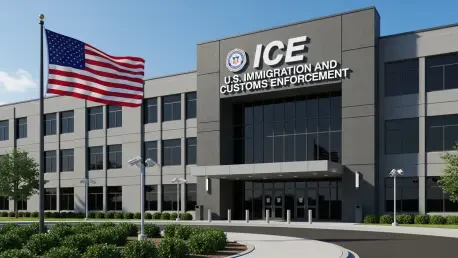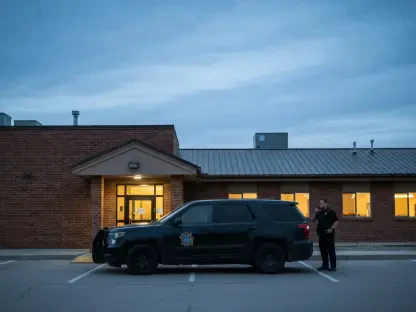The deployment of federal law enforcement to urban centers across the United States has ignited a firestorm of debate, with clashes between national directives and local governance becoming a flashpoint for broader societal unrest. In cities grappling with protests over systemic issues, rising crime concerns, and immigration policies, the presence of federal agents has often been met with suspicion and resistance. This scenario raises critical questions about the balance of power between federal authority and local autonomy, as well as the impact of such interventions on community trust and safety. Rather than quelling disorder, these crackdowns appear to deepen divisions, as evidenced by heated confrontations in several key metropolitan areas. The growing friction underscores a profound struggle over how public safety and civil liberties should be managed, setting the stage for an exploration of specific regional responses and the overarching implications of these federal actions.
Regional Reactions to Federal Presence
Portland’s Pushback Against Federal Overreach
In Portland, the arrival of federal troops to safeguard Immigration and Customs Enforcement (ICE) facilities has sparked significant backlash from local leaders and residents alike. Oregon Governor Tina Kotek has publicly criticized the deployment, arguing that the city faces no credible threat of insurrection or national security crisis, contrary to federal assertions. The governor’s stance reflects a broader sentiment that such actions represent an unwarranted intrusion into local affairs, inflaming tensions rather than resolving them. Protests outside an ICE facility have intensified, with at least one arrest highlighting the ongoing friction between demonstrators and federal forces. This situation illustrates a profound disconnect between federal objectives and local perceptions, as many in the community view the presence of troops as a provocative overstep rather than a protective measure, further eroding trust in governmental authority.
The unrest in Portland also reveals deeper concerns about the militarization of urban spaces and its impact on civil liberties. Activists and community members have voiced fears that federal interventions prioritize political narratives over genuine public safety needs, often at the expense of peaceful assembly rights. The use of force by federal agents, including tactics perceived as aggressive, has only heightened these apprehensions, prompting calls for de-escalation and dialogue. Local officials continue to advocate for control over their own security measures, insisting that state and city resources are better equipped to address Portland’s unique challenges without federal interference. This ongoing clash serves as a microcosm of the national debate over the role of federal power in local governance, raising questions about the long-term consequences of such strained relations on community cohesion.
Chicago’s Community Safety Concerns
In Chicago, the deployment of federal agents near an ICE building in Broadview has drawn sharp criticism from local leaders, particularly over the use of pepper balls and tear gas against protesters. The mayor has condemned these tactics, emphasizing the potential risks they pose to community safety and the erosion of public trust in law enforcement. Such actions have fueled a narrative of federal overreach, with many residents feeling that their concerns about safety are being overshadowed by aggressive enforcement strategies. The tension is palpable as protests continue, reflecting a deep-seated frustration with federal priorities that seem misaligned with the city’s immediate needs and values.
Beyond the immediate confrontations, activists in Chicago have highlighted troubling conditions at the ICE facility, describing it as a detention center with inhumane treatment of individuals. This criticism adds another layer to the conflict, as community advocates argue that federal resources should focus on addressing systemic issues rather than escalating enforcement. The clash between federal actions and local demands for reform underscores a broader struggle over how immigration policies are implemented and their impact on vulnerable populations. As tensions mount, there is a growing call for transparency and accountability in federal operations, with many in Chicago seeking assurances that their rights and safety will not be compromised by external interventions.
Memphis’ Mixed Signals on Crime and Enforcement
In Memphis, the anticipated arrival of federal agents, including ICE and drug enforcement personnel, has been framed as a response to persistent violent crime rates, though local leaders note a recent decline in certain categories. Governor Bill Lee has announced a limited deployment of 150 unarmed National Guard members, with the possibility of further escalation if requested, aiming to bolster public safety. However, this move has sparked unease within the Latino community, where fears of unlawful detentions by ICE are prevalent. The juxtaposition of federal intent to curb crime with community apprehensions about over-policing reveals a complex dynamic, where safety measures risk alienating significant portions of the population.
Protests at Memphis City Hall have further illuminated these concerns, with demonstrators advocating for a reallocation of resources toward education, youth services, and preventive crime initiatives rather than federal enforcement. This public outcry suggests a preference for community-driven solutions over top-down interventions, highlighting a disconnect between federal strategies and local priorities. The presence of federal forces, even in a limited capacity, raises questions about the potential for escalated tensions if community fears are not addressed through dialogue and trust-building measures. Memphis stands as a critical example of how federal actions, intended to restore order, can inadvertently deepen societal divides if not carefully aligned with local needs.
Broader Implications and Future Pathways
Navigating the Divide Between Federal and Local Authority
The recurring theme across these cities is a profound skepticism toward federal interventions, often perceived as unnecessary and provocative by local leaders and communities. The divide between federal directives to protect national interests and local assertions of autonomy has widened, creating a rift that complicates efforts to address underlying issues like crime and protest management. In each instance, federal crackdowns have led to heightened protests, arrests, and public outcry, with little immediate evidence of positive outcomes in terms of safety or stability. This pattern suggests that such actions may be exacerbating tensions rather than fostering resolution, challenging policymakers to reconsider the efficacy of militarized responses in urban settings.
Looking beyond the immediate conflicts, the broader implications of these interventions touch on fundamental questions of governance and civil rights. The erosion of trust between communities and federal authorities risks long-term damage to social cohesion, particularly in areas already grappling with systemic inequalities. Bridging this gap requires a nuanced approach that prioritizes collaboration over confrontation, ensuring that federal actions are transparent and responsive to local contexts. As the debate continues, there is an urgent need for frameworks that balance national security concerns with the preservation of local autonomy, preventing further escalation of tensions.
Building Trust Through Collaborative Solutions
Reflecting on the events that unfolded, it became evident that federal crackdowns often intensified divisions rather than mending them. The clashes in Portland, Chicago, and Memphis demonstrated a consistent pattern of local resistance, driven by fears of overreach and militarization. Each city’s unique response underscored the importance of tailoring interventions to specific community needs rather than applying uniform federal mandates. These past confrontations served as a stark reminder of the challenges inherent in balancing authority and autonomy under pressure.
Moving forward, actionable steps emerged as critical to easing tensions. Establishing joint task forces with federal and local representatives could facilitate better communication and align strategies on public safety. Additionally, investing in community programs that address root causes like poverty and lack of opportunity might offer a more sustainable path to stability. Transparency in federal operations, coupled with genuine engagement with local stakeholders, stood out as essential for rebuilding trust. These considerations pointed to a future where collaboration, rather than conflict, could define the relationship between different levels of government.









